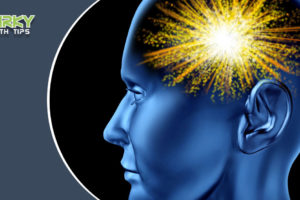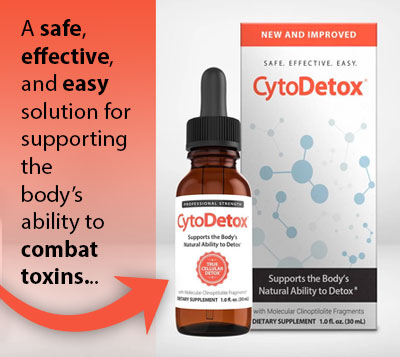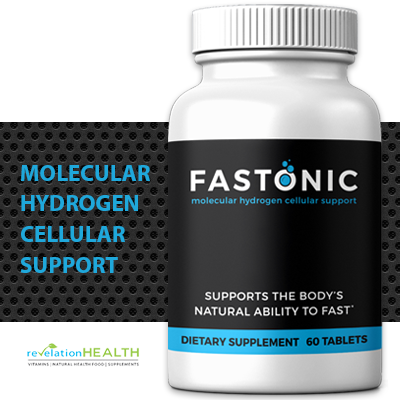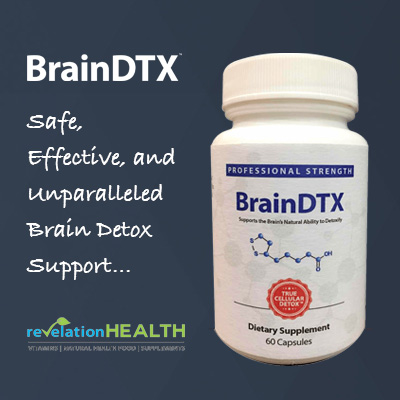Cannabis Benefits and Detriments: You Should Know Both Sides
The Stampede Is On. New Considerations: What Is Best For You?

Cannabis, Like Coffee, Chocolate, Tobacco, and Tea Is A Therapeutic Herb.
Cannabis potentially has both benefits and detriments. To make an informed decision, you should know both sides.
Here, let’s discover the deeper considerations on how to maximize benefits and avoid detriments of cannabis-CBD.
With the stampede for pain relief that does not bear the risks of prescription opioids—the Centers For Disease Control and Prevention states more than 700,000 people have died from opioid overdose in the last eight years—CBD provides a much safer avenue. Nevertheless, let’s look before we leap.
Hairy Potter.
Let us put on our erudite Sorting Caps on to quickly find our Gryffindor—what cannabis product belongs in your home herbal pharmacy—and avoid the Slytherin camp that flirts with dark side effects.
The determining factor regarding human response to any therapeutic herb is your genes — how you, a biochemically-unique individual, respond to herbal influences. In the genetic world, this is your body’s epigenetics on how you experience Cannabis.
Genes regarding Cannabis include CB1, CB2, PEA, OEA, FAAH, FABP, GPR18 & 55, TRPV family, a7-AChR, 5HT family, &, GABA-A … and many more such as COMT, MGL, GPR55, GABRA2, DRD2, and OPRM1. Why the list? It’s a recitation that there are many, many genes responsive to cannabinoids – certainly both THC (psychoactive trans-delta 9-tetrahydrocannabinol, the molecule that provides the buzz) and CBD (non-psychoactive (cannabidiol), as well as the hundreds of other compounds in the whole cannabis plant.
Lions, Tigers, and Bears, O Wow!
Many compounds, many genes, many cell receptors. Thousands of permutations are why different people have different metabolic cascades, defined by their genes, and especially by their unique epigenetic expression of those genes.
Many strains, many fractions.
While there are general, shared similarities among cannabis species: “This one’s good for pain, this one’s good for sleep, this one’s good for seizures, this one’s good for cancer, this one’s good for everything …” your personal experience, is, well, your personal experience.
Not everything you read about Cannabis—benefits or detriments—is personally applicable. (Except here, of course. 🙂
Power Of Knowledge.
The herb, Cannabis, is different from 1) food-herbs (on the dinner plate), 2) tonic herbs (healthy super-nutrition), and 3) drastic herbs (cause violent reactions such as poison ivy, but become excellent medicines when used as triturated remedies).
Understanding the long-established rules of the therapeutic herb category is the starting point to understand and respect the metabolic influence of the three cannabis species: cannabis sativa, indica, and ruderalis.
Therapeutic Herbs
Therapeutic herbs provide medicinal benefits when indicated. A basic rule of therapeutic herbs is that too much, or too frequent, dosing can cause “provings” – side-effects documented when healthy people test the herb in controlled studies. An essential fact because some people find that they must repeatedly take a dose of CBD for chronic pain that returns.
Frequent repetition often requires higher doses over time. This practice risks developing proving symptoms such as spaciness, lethargy, short-term memory loss, and distorted logic (altered logic may or may not be beneficial).
Don’t Settle For Amelioration—Cure Is The Goal.
A person may receive blessed cannabis benefits from “the good herb’s fraction, CBD,” but temporary relief should never deter the quest for a therapy that helps the body cure itself – something the body innately desires.
An interesting note about Cannabis-CBD, many people cite not only amelioration of symptoms, but the eradication of symptoms. It’s as if their bodies were waiting for their cannabinoid receptors to be stimulated to set off a healing cascade at the causative level.
Therapeutic herbs’ “provings” reveal what the herb may help the body cure – pain, neurotransmitter behavior, bladder issues – IF the provings match the person’s symptoms.
This concept launched Dr. Samuel Hahnemann’s (1755 – 1843) quest for “rapid, gentle, and permanent restoration of health, or removal and annihilation of the disease in its whole extent, in the shortest most reliable, and most harmless way, on easily comprehensible principles.”—a standard that modern, allopathic medicine has yet to attain.
Hahnemann published medicinal provings of cannabis Sativa and Indica (the whole flower) in his masterwork, “Materia Medica Pura” circa 1830, where he provided 330 proving-symptoms of Cannabis to guide its medicinal use.
Cannabis Benefits: Genuine Healing.
Understanding that the body’s innate vitality is pre-programmed to heal itself, herbalists work with plants that support the body to end its confusions (symptoms) and return to more optimal health at which time the medicinal substance is no longer required. (Not something that Big Pharma wants in their business model.)
Gut Microbiome & Edibles.
It seems that anything that impacts human neurotransmitters becomes a hot topic, replete with mental and emotional gut reactions. Literally.
The gut-microbiome has a loud, cellular- metabolic voice via the gut-brain/brain-gut connections. This neuro-communication network is a basis for cannabis-CBD edibles.
All forms of Cannabis impact the brain and the gut microbiome, and influences the neurotransmitter, serotonin, in both locations.
Great Unknown.
Science has investigated only a fraction of cannabis molecules. There is more not known than known. Research has focused on THC and CBD. Both fractions have medicinal properties.
- THC is medically employed to minimize nausea and vomiting from toxic cancer therapies. Also, to: reduce pain, treat insomnia, reduce epileptic seizures, improve eye-pressure, settle the stomach, and increase appetite. Other applications include uses for Parkinson’s, PMS, PTSD, Tourette’s, Huntington’s, Alzheimer’s, Crohn’s, and Depression/Anxiety.
- CBD is medically employed to reduce inflammation and pain. Other applications include help for insomnia, depression/anxiety, acne, diabetes, cancer, obsessive-compulsive disorder, post-traumatic stress, Alzheimer’s, and seizures.
Cannabis Benefits and Detriments. Side Effects of:
- THC in susceptible people? Science cites heart palpitations, paranoia, shortness of breath, disorientation, feelings of distress, and psychosis.
- CBD in susceptible people? While much less likely to cause side effects, even in high doses, the literature does reveal that in sensitive people, side effects can include: worsening of Parkinson’s, drowsiness, low blood pressure, anxiety, depressions, schizophrenia, nausea, and psychosis.
Benefits? Detriments? Pluses and minuses only make sense – cannabis is a therapeutic herb—an excellent medicine when indicated, but prolonged use can cause side effects, particularly in susceptible people. Knowing this helps the consumer evaluate and implement advantageous use.
Cannabis Benefits and Detriments: Who’s Susceptible?
Check your cannabinoid genes to find out. Or, learn by trial and error.
Of particular concern is the research concluding that exposure to marijuana in childhood and early teens increases the risk of neurosis (schizophrenia) 7 to 14%. The reason cited is about how the brain develops, and the threat subsides after the early teens.
Cannabis claims the high spot of controversy. The United States government went to all-out war on the humble cannabis plant in 1937 with the Marijuana Tax Act. Since then, Cannabis is used to imprison people—especially ethnic minorities; express rebellion against a static, societal status-quotient (counter-culture in the ’60s and ’70s), and a key focus in President Nixon’s War On Drugs.
Simultaneously, artists and religious practices revealed that Cannabis serves as a muse for poetry, literature, music, and meditative states (several religions employ Cannabis).
First, we must define what Cannabis is.
You may have just thought, “Well, duh, it’s the marijuana plant.” But au contraire mon fraire.
Something happened to the cannabis plant since George Washington grew rope-hemp at Mount Vernon. What has changed is hybridization. Today’s Cannabis is not the same as yesterday’s Cannabis.
Cannabis Benefits and Detriments: Woes of Hybridization.
The attempts to strengthen certain traits in plants, animals, and even people through the time-honored practice of selective breeding, gene-modifications have both strengths and weaknesses.
As a separate example, the cavendish banana—designed for appearance and bunch-packaging—is susceptible to fungus, which is driving this mono-culture banana toward extinction. Nature does not support mono-culture but prefers biodiversity.
Cannabis Benefits and Detriments: Woes of Alteration.
For a separate example, commercial (CAFO—Concentrated Animal Feeding Operation) milk is not the same as milk from the grass-fed, pasture cow.
CAFO milk is lower in beneficial omega three fats and other nutrients. It’s higher in artery-damaging xanthine oxidase. Heat-pasteurization damages the molecules and destroys gut-supportive probiotic species. Homogenization minimizes the size of the fat molecules (linked with cardiovascular disease). It often contains hormone disruptors (rBST) and herbicides. Here is a caution for when a natural product becomes altered.
The point here is that hybridization/adulteration changes things, for better or worse. Nature decides the niches, not Science. Science can cooperate with Nature, but so far, an overdose of hubris is straining any alliance. This hubris is particularly evident in the many inevitable mistakes of CRISPR gene edits.
Short-sighted Science (or falsified Science as Monsanto/Bayer has promulgated) has resulted in Round-up Ready Corn creating superweeds and adulteration of virtually the entire corn species. Don’t forget RoundUp’s link to causing cancer.
Today’s Cannabis plants (strains) are hybridized and altered to produce higher amounts of THC—more buzz. “Recreational” Cannabis boasts up to an unnatural 30% THC – quite a step up from George Washington’s 0.3% rope-hemp. With the societal acceptance of the CBD molecule, Cannabis is now being hybridized to minimize the buzz and maximize the CBD oil.
The cannabis plant is not the same as the Bible’s kaneh-bosm, endorsed in Exodus 30:22-23 by God Almighty. Nor is bread—the Staff of Life—due to wheat’s massive hybridizations, and with recent use of cancer-suspect, glyphosate herbicide, as a drying agent.
Nor are CAFO eggs. And bee-honey is being threatened by glyphosate pesticide as Science scrambles to make synthetic honey from high-fructose corn syrup.
Cannabis Benefits and Detriments: Law of the Whole Herb.
Now, Science and Government are divvying out cannabis’ molecules to the public.
Science and Government are inadvertently breaking a Natural Law. What? It’s the law of the whole herb component—root, stem, bark, leaf, rhizome, seed, flower, as opposed to a fractioned isolate.
In Nature, herbs have built-in synergists and molecular checks-and-balances. They grow in a niche, according to Nature’s principles. One molecule may be stimulating, but in Nature, there’s a counterbalancing molecule that sedates, and others that support upstream and downstream cellular cascades.
We might wonder in studies where isolated THC or CBD is employed if the data, accurate for the study, is unreliable in regards to the performance of the whole herb or integral component when applied to the unique individual.
For example, fractioning and isolating is basically what Big Pharma does to develop a majority of its armamentarium. Find a plant molecule, isolate it (discard Nature’s synergists, check-and-balance molecules), create a synthetic analog, patent it, and sell it for a whoppingly high price to suppress or alter a cellular metabolic process.
With iatrogenic disease being in the top three causes of death and responsible for congenital disabilities (Vioxx, DES, opiate addiction) — we must understand this point of differentiation when freely choosing what and how to treat the human body.
A fractioned/isolate analog drug that suppresses symptoms rather than initiates a self-cure is one crucial reason that prescription drugs are rife with unwanted side-effects. Nature may be speaking and reporting that short-sighted therapies are not in the body’s best accord.
Many studies (now being suppressed by Google, et al.) prove that a whole herb, or integral herb-component, is superior to prescription drugs—better results, fewer side effects. One case-in-point citation: Turmeric/Curcumin performs better than NSAIDs for joint arthritis without the side effects.
With all these variables considered, we now have the knowledge to help guide us toward judicious use of Cannabis-CBD and avoid joining the mass stampede to taste the once-forbidden herb without first being empowered to understand what we are doing.
Cannabis Benefits and Detriments: Money & Mischief.
It makes it harder for the consumer to experience CBD’s benefits because there are inferior products in the marketplace. There’s undesirable processing with toxic, carcinogenic hexane vs. superior extraction with carbon dioxide; Also, there’s pesticides Vs. organic plants. Finally, there’s hemp oil, which retains more of Nature’s varied molecules vs. isolated/concentrated CBD.
Like any and every therapeutic herb, Cannabis and CBD belong in the natural pharmacopeia. For many people, CBD is a blessing in the home-remedy kit.
Now, you can pick a good one with a thorough consideration of Nature’s laws. Here’s a QuirkyHealthTips checklist:
- Organically Grown? You don’t need more pesticides, fungicides, herbicides! Organic growers generally provide a better level of plant nutrition than hemp-nurseries that only provide forced-growth nutrients via cheap hydroponics.
- Hemp Oil Base? Hemp Oil has a green color. It provides a broader spectrum of whole plant molecules. Or, make your decision to use the decarboxylated oils (intermediate processing) where carboxyl groups have been removed to increase the amount of CBD at the expense of other molecules—thus feature concentrated CBD. Or, there’s the highly refined, golden-color, isolated CBD—tantamount to a drug rather than an herb—that boasts an even higher concentration of CBD.
Note: if you need the extra strength of a concentrated CBD, the advice here is also to use a
hemp oil version to gain additional nutrients—fatty, amino acids, and minerals.
- CO2 Extraction(clean), as opposed to hexane/petrochemicals (toxin residue).
CBD is a blessed pain, stress, and inflammation reliever – one that has fewer side effects than many analgesic drugs. Acetominophen (Tylenol) damages the liver. Ibuprophen (Advil) damages the blood. Aspirin causes stomach bleeding. For many, CBD helps the body resolve issues with pain, such as the occasional headache, menstrual cramps, and achy joints without damaging side effects.
Remember that pain is your body’s warning that something needs to be corrected. Your body can return to more optimal health. Natural health disciplines focus on helping the body heal itself. Cannabis-CBD is one of the best OTC pain relievers on the market, provided it works for you.
Citations:
- DiPatrizio NV. Endocannabinoids in the Gut. Cannabis Cannabinoid Res. 2016;1(1):67–77. doi:10.1089/can.2016.0001
- Evrensel A, Ceylan ME. The Gut-Brain Axis: The Missing Link in Depression. Clin Psychopharmacol Neurosci. 2015;13(3):239–244. doi:10.9758/cpn.2015.13.3.239
- DiPatrizio NV. Endocannabinoids in the Gut. Cannabis Cannabinoid Res. 2016;1(1):67–77. doi:10.1089/can.2016.0001
- Stampanoni Bassi M, Sancesario A, Morace R, Centonze D, Iezzi E. Cannabinoids in Parkinson’s Disease. Cannabis Cannabinoid Res. 2017;2(1):21–29. Published 2017 Feb 1. doi:10.1089/can.2017.0002
- Naftali, Timna et al. Cannabis Induces a Clinical Response in Patients With Crohn’s Disease: A Prospective Placebo-Controlled Study Clinical Gastroenterology and Hepatology, Volume 11, Issue 10, 1276 – 1280.e1. doi.org/10.1016/j.cgh.2013.04.034
- Radhakrishnan R, Wilkinson ST, D’Souza DC. Gone to Pot – A Review of the Association between Cannabis and Psychosis. Front Psychiatry. 2014;5:54. Published 2014 May 22. doi:10.3389/fpsyt.2014.00054
- Cannabis (Marijuana) and Religion. ReligionFacts.com.14 Mar. 2017. Web. Accessed 17 Nov. 2019. www.religionfacts.com/cannabis
- Daley CA, Abbott A, Doyle PS, Nader GA, Larson S. A review of fatty acid profiles and antioxidant content in grass-fed and grain-fed beef. Nutr J. 2010;9:10. Published 2010 Mar 10. doi:10.1186/1475-2891-9-10
- Oster, K., Oster, J., and Ross, D. “Immune Response to Bovine Xanthine Oxidase in Atherosclerotic Patients.” American Laboratory, August, 1974, 41-47
- Oster KA. Plasmalogen diseases: a new concept of the etiology of the atherosclerotic process. American Journal of Clinical Research1971:2;30-35.
- Bender, The Colors of Cannabis: Race and Marijuana. Law Review/U.C. Davis Copyright © 2016 Steven W. Bender. Associate Dean for Research and Faculty Development, Seattle University School of Law.
- Kosicki, M., Tomberg, K. & Bradley, A. Repair of double-strand breaks induced by CRISPR–Cas9 leads to large deletions and complex rearrangements. Nat Biotechnol36, 765–771 (2018) doi:10.1038/nbt.4192
- Tips, Whole Herb VS Fractioned Isolates – The Two-Edged Sword: “Molecules That Help, Molecules That Heal” An Herbology Commentary Applicable To Opiate Addiction & CBD By Jack Tips, Ph.D, C.C.N.
- Huang ES, Strate LL, Ho WW, Lee SS, Chan AT. Long-term use of aspirin and the risk of gastrointestinal bleeding. Am J Med. 2011;124(5):426–433. doi:10.1016/j.amjmed.2010.12.022
- Lazarou J, Pomeranz BH, Corey PN. Incidence of adverse drug reactions in hospitalized patients: a meta-analysis of prospective studies. JAMA . 1998 Apr 15;279(15):1200-5.
- . Mierzwinski, U.S. PIRG Monsanto Manufactured Scientific Studies And Then Used Those Studies To Influence EPA, Other Regulators Huffington Post, 2017
- Journal of Experimental Medicine. “Vioxx Side-effects: Possible Explanation.” ScienceDaily. ScienceDaily, 29 August 2007. www.sciencedaily.com/releases/2007/˚
- Aggarwal BB, Harikumar KB. Potential therapeutic effects of curcumin, the anti-inflammatory agent, against neurodegenerative, cardiovascular, pulmonary, metabolic, autoimmune and neoplastic diseases. Int J Biochem Cell Biol. 2009;41(1):40–59. doi:10.1016/j.biocel.2008.06.010
- Sondergaard KB, et al. Non-steroidal anti-inflammatory drug use is associated with increased risk of out-of-hospital cardiac arrest: a nationwide case–time–control study. European Heart Journal – Cardiovascular Pharmacotherapy. doi:10.1093/ehjcvp/pvw041
- Daily JW, Yang M, Park S. Efficacy of Turmeric Extracts and Curcumin for Alleviating the Symptoms of Joint Arthritis: A Systematic Review and Meta-Analysis of Randomized Clinical Trials. J Med Food. 2016;19(8):717–729. doi:10.1089/jmf.2016.3705
- US News & World Report. The New Censorship. How did Google become the internet’s censor and master manipulatory, blocking access to millions of websites? Robert Epstein, 2016
- U.S. Food & Drug Administration: Acetaminophen: Avoiding Liver Injury Jun. 2009









4 Comments
Leave your reply.